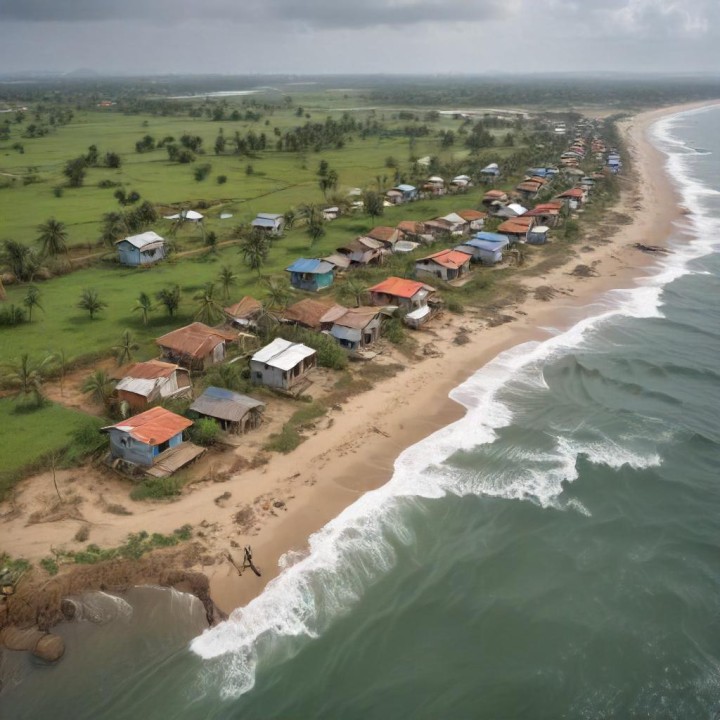Mohammad Baki Billah Khan
Climate change and global warming are widespread phenomena that concern people due to their detrimental effects on ecosystems and living beings. Different geographical areas experience these impacts in various ways. The rising sea levels, driven by global warming and the melting of ice in various parts of the world pose significant threats to many forms of biodiversity. Satkhira, a district in southwestern Bangladesh, exemplifies vulnerability to climate change. Gradually increasing soil salinity affects both agriculture and the drinking water supply. As a coastal area, Satkhira is frequently hit by natural disasters throughout the year, significantly impacting the local economy and the livelihoods of its residents. I have visited Satkhira several times, but during my last visit in early summer, I saw the district from a new perspective. I was there to collect data for the mid-term evaluation of a project titled “Strengthening Resilience through Climate Change Adaptation and the Promotion of Sustainable Livelihoods in Southern Bangladesh” and experienced Satkhira in a different light. In summer, the temperature rises so high that simply moving through the streets becomes a formidable challenge.
The scorching sun and the heat radiating from the ground made life miserable, with temperatures higher than in any other region of Bangladesh. People involved in agriculture, aquaculture, or any outdoor work in Satkhira face significant health risks due to extreme heat. These risks include heat cramps, heat exhaustion, heatstroke, hyperthermia, and exacerbation of chronic diseases. Additionally, increasing soil salinity is severely impairing agricultural productivity, directly impacting community income levels. Situated along the Bay of Bengal, Satkhira experiences annual natural disasters such as cyclones, tidal surges, and flooding. The residents of Satkhira are adopting climate resilience measures with the support of the government and NGOs to combat these challenges. There have been notable changes in the agricultural and aquaculture sectors, with many people diversifying into various income-generating activities (IGAs). However, the decreasing availability of potable water remains a significant challenge. The salinity intrusion has made the groundwater increasingly unsuitable for drinking, compounding the difficulties faced by the community. Despite these hardships, the resilience and adaptability of the people of Satkhira offer a hopeful outlook for overcoming the ongoing impacts of climate change.
Despite the challenges, Satkhira holds significant potential in aquaculture and agriculture. Recently, farmers, under the guidance of the Government of Bangladesh, began cultivating off-season watermelons during periods of water scarcity, achieving remarkable success. What started on 32 hectares has now expanded to 175 hectares. Additionally, to combat soil salinity, they have adopted innovative practices like sack gardening. Setting aside its challenges, Satkhira offers a plethora of attractions waiting to be explored. From historical sites such as Ishwaripur Hammam Khana and Jahazhaghata Naval Fort to religious landmarks like Tetulia Shahi Jame Masjid, Shree Jashoreshwari Maa Shaktipith Temple, Sonabaria Mothbari Temple, Gunagorkati Mazar, Chheghariya pair Shiva temple & Nalta Sharif, there’s much to discover. The scenic beauty of Satkhira includes breathtaking landscapes like the Sundarbans and Mandarbaria Beach. Moreover, Satkhira is renowned for its delectable cuisine, including specialties like chui-jhal and shondesh. Satkhira exemplifies the pressing challenges of climate change, from soil salinity to natural disasters. Yet, the community’s resilience offers hope. As efforts to combat climate impacts continue, Satkhira’s potential in agriculture and its cultural richness underscore the importance of collective action. Together, we can build a more resilient future for Satkhira and beyond.”

